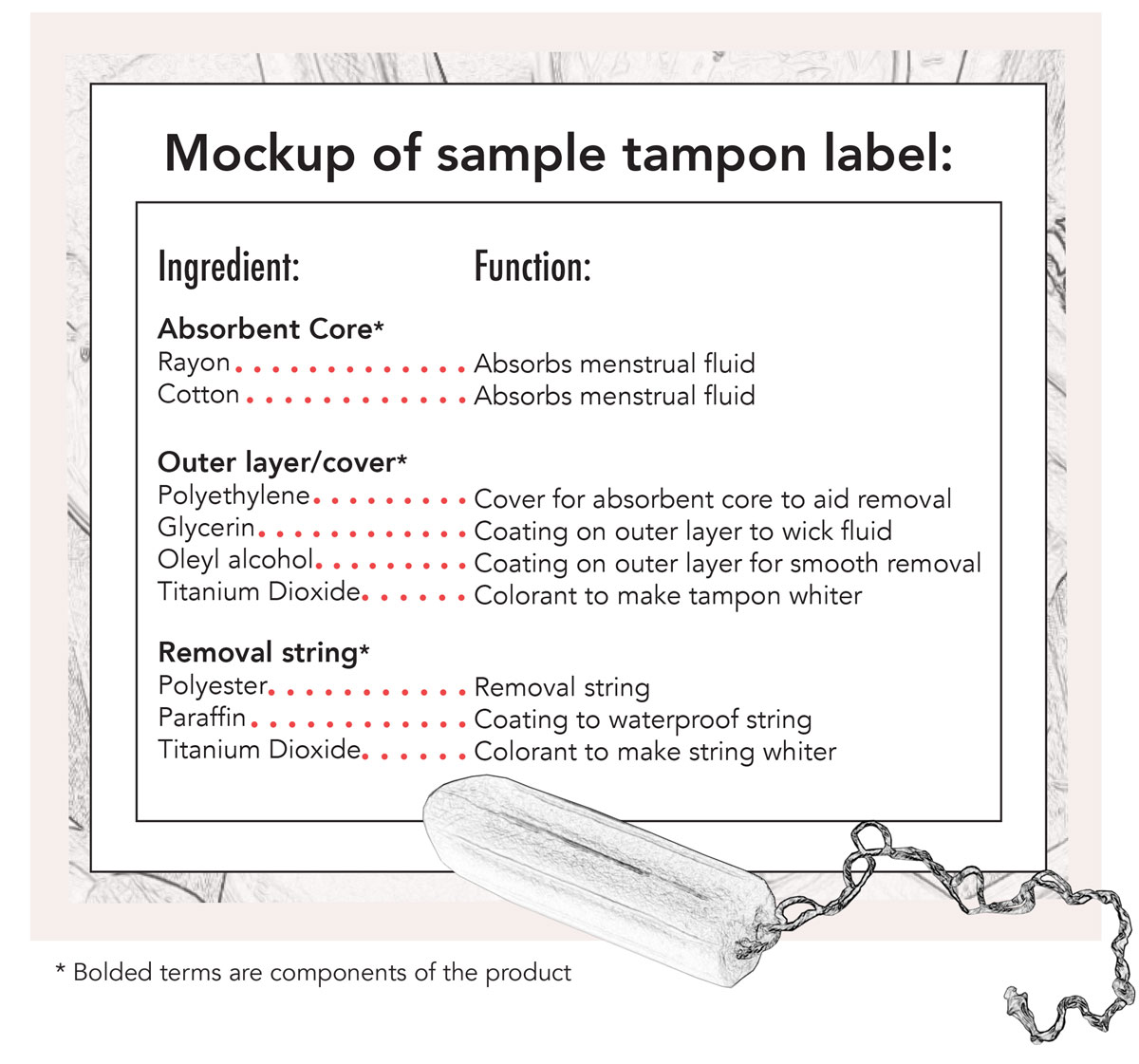Español: ¿Qué aspecto debe tener una etiqueta de ingredientes de los productos para la menstruación?
What Should an Ingredients Label look like for Period Products?
Ideally, the period product label should include as much helpful information about ingredients as space allows. Every ingredient intentionally added to the product should be listed on the outer package so that the user knows what ingredient exposures are associated with use of the product. Additional information about the ingredients will also help users better understand how products and brands differ from one another. Additionally, ingredient labels should be displayed clearly and conspicuously. Consumers should not have to hunt for ingredient disclosure. It should be made prominent, in readable font on the packaging, and information understandable. This information will help product users make informed choices about the products best for them. Note: The following recommendations go above and beyond the current requirements of the New York law outlined in this report.
There are three key pieces of information that should be provided for each ingredient:
1. The chemical name of the ingredient:
This should be specific enough to uniquely identify the ingredient being used – and should not simply describe what kind of ingredient it is.Ideally, over time manufacturers should harmonize their nomenclature, so that all brands use the same name for the same chemical. As a start, INCI (International Nomenclature Cosmetic Ingredient) names should be useful for the many ingredients where it is applicable, and is familiar to users who see this nomenclature on their personal care product labels.
2. The component of the period product where this ingredient is used:
This helps the user understand where this ingredient would be found in the product. It helps the user understand if an ingredient would have direct skin exposure, or if it is part of the absorbent core etc.
3. The function of the ingredient:
The function description should provide a simple explanation of what this ingredient does in the product. This helps the user understand why this ingredient has been included in the product. Knowing the function of ingredients can also help a user distinguish differences between similar products.
For more information view WVE’s report: What’s in Your Period Product? An investigation of ingredients disclosed on product labels, or see our fact sheets.



